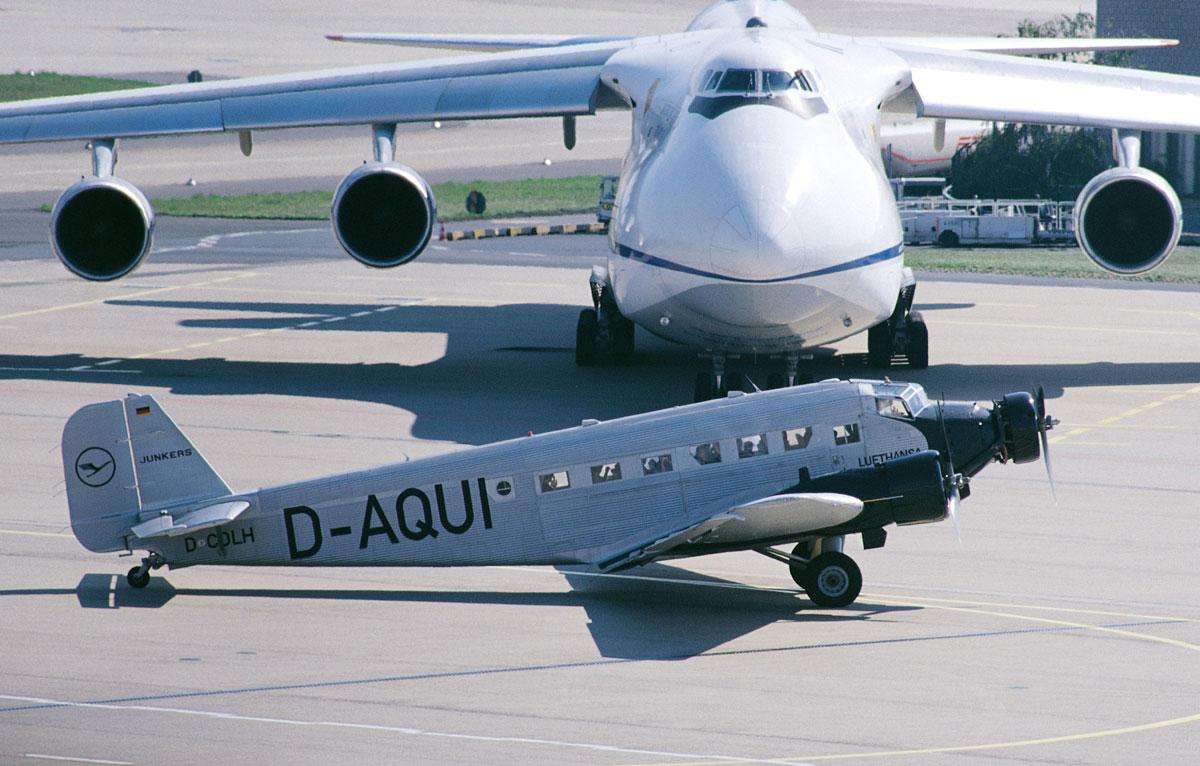All that happened before MALÉV
Magyar Aeroforgalmi Részvény Társaság - MAEFORT (1920 - 1921)
Aero Express Rt. (1922-1926)
and Magyar Légiforgalmi Részvény Tarsasag - MALÉRT (1922 - 1945)
Historical backround
One of Central Europe’s countries is situated around the famous River Donau (Danube), splitting the country in two. On 8 July 1867 the Austrian Kaiser Franz Joseph I was crowned King of Hungary and the Austro-Hungarian Monarchy was formed. After the Franco-German War in 1870 a League of the Three Emperors was agreed upon. This League was signed between the German Kaiser Wilhelm I, Kaiser Franz Joseph I and the Russian Tsar Alexander II and led to a prosperous time in this part of Europe. The architect behind the League had been the German Chancellor Bismarck. But the differences between Russia and Austria-Hungary about the Balkan area were too big that the alliance could work. Russia signed a treaty with France again and differences grew. After Bismarck’s death (1898) Germany and Austria-Hungary were isolated. Was it not for Russian domestic problems, the three would have entered a War over the annexation of Bosnia-Herzegovina (1908). But six years later the Serb nationalist Gavrilo Princip shot dead the Arch Duke Franz Ferdinand and his wife. This incident led to the Great War, where Hungary of course had to join Austria and Germany.
The military effort was too big for the Austro-Hungarian Empire and after the surrender of the Romania (September 1918), the Government asked for a peace treaty with the Allies. The successor of Kaiser Franz Joseph I, Kaiser Karl I, tried to keep the empire together, but saw it fall apart bit for bit: 28 October Czechoslovakia declared itself independent, followed by the Kingdom of Serbs, Croats and Slovenes (29 October) and finally Hungary on 1 November 1918. Miklos Horthy de Nagybanya was the leader of the anti-Communist revolution in November 1919. 1920) and ruled the country for 24 years. Twice former King of Hungary, Karl von Habsburg, tried to claim the Hungarian Crown, but did not succeed. Hungary, being a part of the Austro-Hungarian Empire, was forced to accept the Treaty of Trianon (4 June 1920), where Hungary lost two-thirds of its pre-1914 land to Romania, Czechoslovakia, the Kingdom of Serbs, Croats and Slovenes, Poland and Italy.
Civil Aviation and Civil Air Register
The first international civil air service was set up by the Compagnie Franco-Roumaine de Navigation Aérienne, which opened on 1 May 1922 the air service (Paris - Strasbourg - Prag -) Vienna - Budapest. The destruction of the Hungarian Air Force’s aircraft and engines was led by the French, who finished their work in 1921. By then most of the aircraft and engines were destroyed. After the French officers of the Inter-Allied Aviation Control Commission - IAACC had left Hungary (1921) there was a strong anti-French feeling in this Danube-republic. Earlier, the French had ‘’forced’’ the Hungarian Government to award the French airline company Compagnie Franco-Roumaine de Navigation Aérienne the sole right for the air service Vienna - Budapest - Beograd in return for a French loan and the promise to save some military aircraft from destruction.
The Hungarian Government awarded the Franco-Romanian airline company the requested concession, but the French promises were not kept. It was therefore not surprisingly that Hungary in the beginning of its search of international air service was positive to the plans of the Junkers Flugzeugwerk AG (Jfa) to form an airline company (in 1923) called Aëroexpress RT, which, however, lost its subsidy in 1926, when anti-German feelings grew ("...everything but German!").
Aeroexpress Rt. had six pieces, equipped with floats, four-seater Junkers F13 plans. According registration mark: H-MACA, H-MACB, H-MACC, H-MACD, H-MACE, H-MACF, Gyári szám szerint: D-216 WN 632, D-224 WN 635, D-211 WN 628, D-226 WN 638, D-227 WN 639, D-228 WN 640.
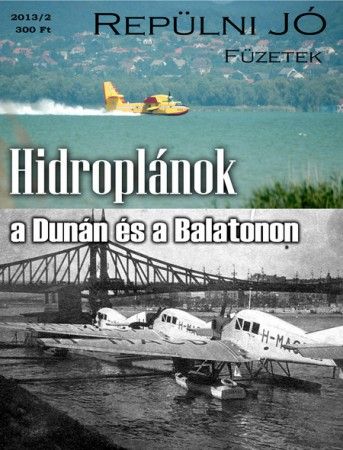
In April 1923 was a sensation in Budapest the Junkers Hydroplane appearance front of the Gellért hotel, accommodation in Danube section.

Junkers F13
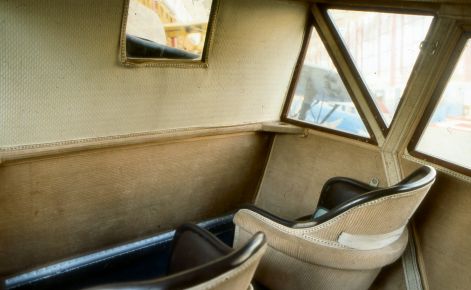
The cabin
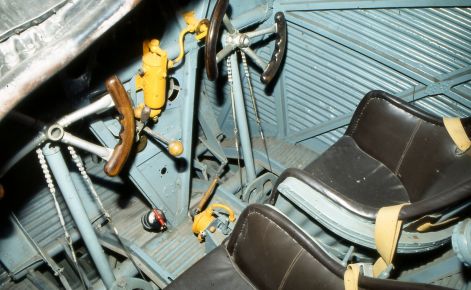
The cockpit
Jfa produced military aircraft as well as civil, and since the Hungarian Government was most interested in building up a new air force a co-operation with Jfa seemed logical. By 1920 a Department for the Administration of Civil Aviation was formed, as a part of the Ministry of Commerce. This Department worked with former Hungarian officers on new regulations for Hungarian Aviation. On 30 December 1922 a Hungarian Aviation Law was passed in Parliament. Earlier, on 17 November 1922, the Allied had lifted the flying-prohibition and production of aircraft in Hungary, leading to the development of aviation again. The Magyar Aero Szövetség (the Hungarian Aero Club) was formed and magazines were published. The country used the letters H-M for its Civil Air Register, but after becoming a member of the CINA it changed its Air Register and the letters HA were allotted. Military aircraft built during the twenties and thirties received, as had been the case in German and Austria, also civil markings, but were later (after 1936) given military serials.
Magyar Aeroforgalmi Részvény Tarsasag – MAEFORT (1920 - 1921)
The first and the largest airline of Hungary are presented here which was formed directly after the Great War.
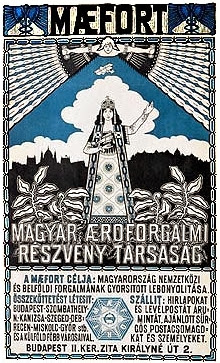
Directly after the Great War, the new State of Hungary tried to start the rebuilding of the country. As most railways were destroyed or partly out of order, the new Government soon realised that aircraft could play a vital role in the development of the new country. Budapest already had its first experience with the opening of the military airmail service Vienna - Budapest, which was opened by the Austrians on 4 July 1918. This airmail service was a great success. Therefor a new company was formed just 1½ year after the end of the Great War.
February 1920 the Magyar Aeroforgalmi Részvény Tarsasag - MAEFORT was founded in Budapest with a capital of 50 million Kroner as a semi-military organisation. The aim of the MAEFORT was the development of air transport, organising advertising and joyride flights. The MAEFORT employed a number of former military pilots. The MAEFORT took over a considerable number of former military aircraft of the Phönix C I-type, which were left behind in Hungary by the Austrians and Romanians after the end of the Great War. MAEFORT took over approximately 28 Phönix C I aircraft in service. The registration H-op.15, H-op.16 and H-op.18 are known.
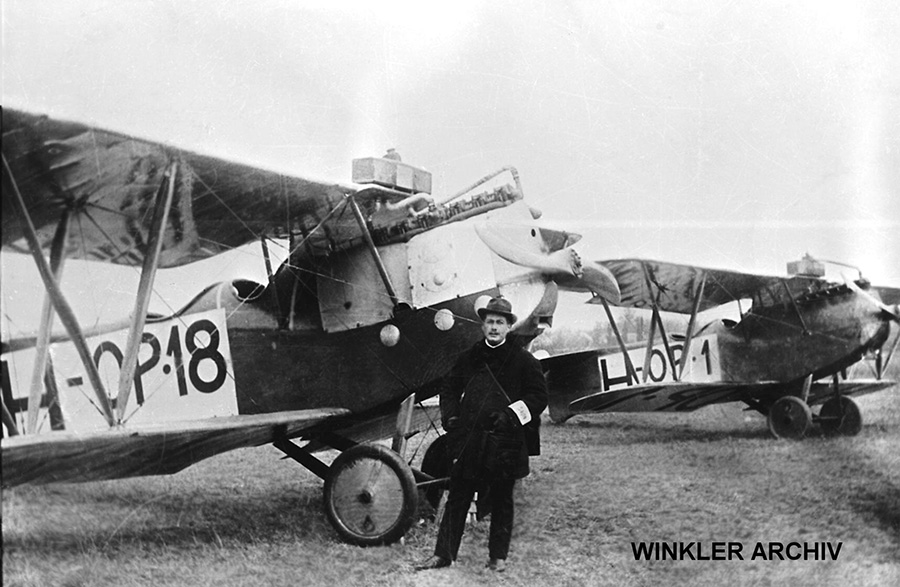
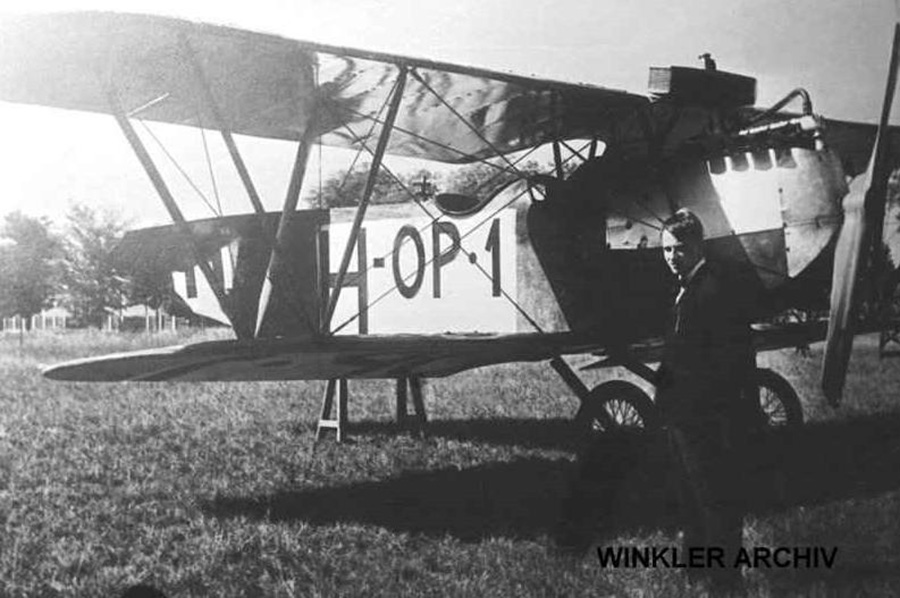
The Phönix C I was a reconnaissance aircraft dating from 1918 and had accommodation for two pilots. In MAEFORT-service one pilot flew the aircraft and on the second seat was reserved for the passengers and the air mail bags. The maximum take-off weight of this aircraft was 1,240kg and it had a maximum speed of 175km/h. On 12 May 1920 MAEFORT started with the exploitation of the lines Budapest - Szombathely, Budapest - Miskolc and Budapest - Szeged. Later that year or possibly first in 1921 another connection between Budapest and Debrecen was opened. On all lines the Phönix C I was used. The aircraft transported mainly airmail and newspapers and if needed one passenger. The lorries of the Hungarian Post Office drove with the mail to the aircraft and picked up or delivered the mail subsequently. The results achieved on this line were not bad. No less than 4,104 flights were made on which 43 passengers and 2,045kg mail was carried. But in autumn 1921 the Inter-Allied Aviation Control Commission - IAACC found out that military aircraft were used by the MAEFORT and it demanded all aircraft destroyed and the liquidation of Magyar Aerofolgalmi RT - MAEFORT. This happened in October, with the official liquidation being on 8 December 1921.
Magyar Légiforgalmi Részvény Tarsasag – MALÉRT (1922 - 1945)
Although the company was founded well before the earlier mentioned Aero Express R.T., it did not start its work until the spring of 1923. The Hungarian Wilcsek-Szegö initially founded the company on 31 March 1922 in the capital of Hungary, Budapest. The capital stock was 250,000 Pengö. As the government became more and more anti-German, the company managed later to get the sole-right for air transportation to, from and in Hungary.

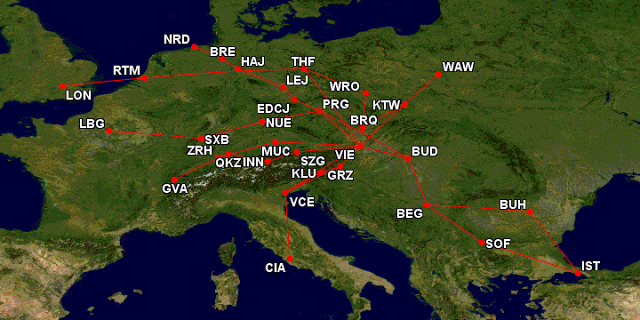
Malert route in 1929
But before it came that far, the company ordered in Holland at the N.V. Nederlandsche Vliegtuigenfabriek (Fokker) no less than 6 Fokker F.III limousines, all brand new. All aircraft were delivered by March 1923 under the transfer registration H-F.1 to H-F.6.
Fokker was a Dutch aircraft manufacturer named after its founder, Anthony Fokker. The company operated under several different names, starting out in 1912 in Schwerin, Germany, moving to the Netherlands in 1919.
During its most successful period in the 1920s and 1930s, it dominated the civil aviation market. Fokker went into bankruptcy in 1996, and its operations were sold to competitors.
In Hungary they were registered H-MABA to H-MABF and with them MALÉRT started propaganda- and joy-riding flights as from 3 April 1923. The Fokker F.III, H-MABA of MALÉRT was one of the first aircraft delivered to the airline.
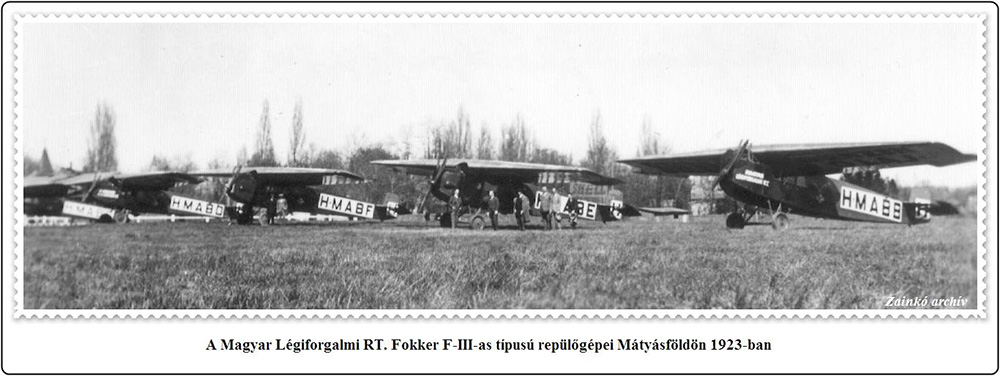

(Via: Thijs Postma) Meanwhile, Aero Express RT had received its six Junkers F 13s and wanted to start on 16 July 1923 the Budapest - Wien service in co-operation with the Austrian partner Österreichische Luftverkehrs AG - ÖLAG and other Trans Europa Union-members. With the Fokker F.IIIs MALÉRT started on the same date a service parallel to the Aero Express R.T./ÖLAG-route. The only difference was that MALÉRT flew a route, which diverted from the Aero Express R.T.-route. MALÉRT flew without actually landing there via the Austrian cities of Brück a.d. Leitha and Raab. On 30 October 1923 the 1923-season could be closed without any problems and on the Wien-service the company transported 369 passengers and made 151 regular flights over the line. In addition to these results the company made 256 joy-riding flights and carried 985 passengers and furthermore on 19 charter flights 78 passengers. Totally 426 flights were made and 1,432 passengers carried. MALÉRT was also founded to open regular domestic routes, but it would take until 1930 before any of such route could be opened. In Austria another small company wanted to start with regular flights using Fokker-aircraft. The company, Technische Werkstätter G.m.b.H. from Wien, chartered the Fokker F.III (H-MABE) from MALÉRT, and registered in Austria as A-5 (Date of registration: 27 October 1923). The aircraft was registered until 31 December 1923 on the company's name and was used for some joy-riding flights in Wien, but in what extend and how many flights were made or passengers were carried is not known. Technische Werkstätter GmbH paid DFL 6,000 for the rental of the aircraft until 1 July 1924 and MALÉRT would receive 50% of the brute-revenues from joy-riding flights. The aircraft stayed not that long in Austria. It probably returned to Hungary already in January 1924 and took up service with MALÉRT again. Later Technische Werkstätter GmbH purchased a Fokker F.V from the Netherlands and used it for joy-riding flights. In Austria the A-5 registration was cancelled on 12 March 1924.
On 2 May 1924 services were resumed by MALÉRT again on the Budapest - Wien line. It was flown 6 times a week in both directions, again with the Fokker F.III-limousines. This aircraft carried beside one pilot, five passengers.
There were only a few changes in the network of the MALÉRT during the last years of the twenties. From 1926 MALÉRT flew the Budapest - Wien service in pool with the ÖLAG and the Deutsche Luft Hansa AG (DLH) and only one new city could be added to the list of airports serviced by MALÉRT: Graz in Austria. After the signing of Austro-Hungarian Air Agreement on 24 August 1924, the Hungarians immediately increased their activities on Austria and beyond. Together with the Junkers F 13s of ÖLAG (2 aircraft with the registration A-26 and A-27), the MALÉRT surveyed the Budapest - Graz route destined to be opened on a regular basis in 1927. The line was flown from 14 October until 3 November 1926. The Fokkers and Junkers F 13s made 18 flights (with two forced landings) and carried 37 passengers, 45kg of goods and flew 5,650km over the 276km long line. The line seemed to have given the results MALÉRT had hoped for, then on 20 April 1927 the line was flown by Fokker F.III. In Graz there was connection to Klagenfurt and Venezia (Venice) with ÖLAG-aircraft. Thus Budapest had a connection with Italy. On the Budapest - Graz line MALÉRT and ÖLAG made 384 flights and flew 129,430km. A total of 372 passengers, 4kg of letters, 3,585kg of goods and 144kg of luggage was carried. The Fokker F.III and ÖLAG Junkers F 13s had to make 7 forced landings on the line. None of the aircraft seemed to have had any substantial damage as no aircraft were written off that year. The service was closed on 15 October.
Another important event was the dissolving of Aero Express R.T. in 1926. After the merger of Junkers Luftverkehr AG and Deutscher Aero Lloyd AG into Deutsche Luft Hansa AG, the Aero Express RT did not get its concession prolonged by the Hungarian Government and had to cease operations. The Government did not want to have a too big German influence in Hungarian airline companies. This gave MALÉRT its hands free to develop itself. But the company did not managed to prosper the way it would like to have. The economical situation of the country was bad and foreign airline companies flew many international routes on Budapest, thus leaving MALÉRT with the domestic and shorter international routes.
International routes from Budapest consisted of a line from Paris, via Strasbourg, Praha and Wien to Budapest and beyond to Beograd in Yugoslavia. This line was run by the French airline company CIDNA and proved to be very successful. CIDNA used international crews containing French, Hungarian, Austrian and Serb personnel. The aircraft used in the early years after 1925 were Caudron C.61s and Blériot Spad aircraft of various types. DLH and ÖLAG flew the Wien - Budapest line with Junkers F 13s, capable of carrying 4 passengers. These aircraft were later supplemented by Fokker F.III and Dornier Merkurs of the Deutsche Luft Hansa AG.
To promote aviation in Hungary itself a number of Air Displays were held. One of the biggest displays was held in 1928 (17 May), organised by the Motor Section of the Hungarian Athletic Club. It was held at Budapest’s Airport Mátyásföld and attended by a crowd of 15,000 people. On show were mainly Hungarian product and in all 16 aircraft were on display.
As the case was in Austria and Germany, also Hungary started to set up a secret air force. One of the bases was at the airfield of Szombathely. MALÉRT started at the end of 1929 a air mail service between Budapest and Szombathely, using four Heinkel HD.22, flown by military pilots. The aircraft were built by the Weiss Manfred Repülögép és Motorgyár Részvény Társasag, a Hungarian aircraft factory established to built aircraft for the clandestine Hungarian Air Force and for the national airline company MALÉRT.
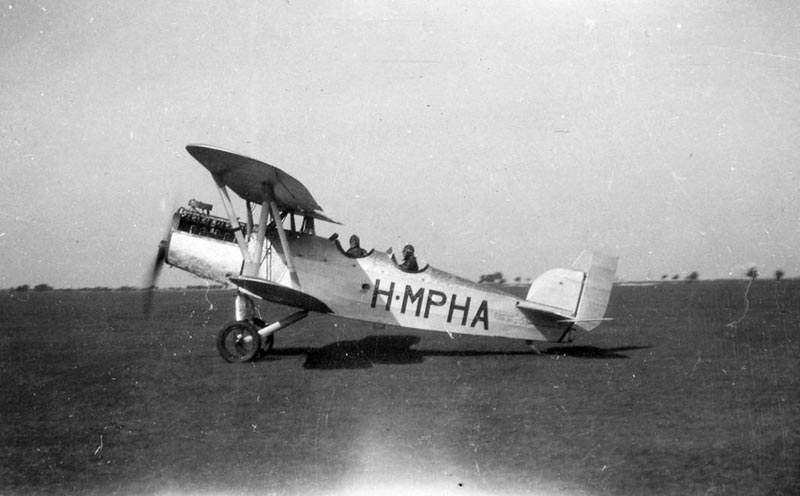
Heinkel HD.22

Heinkel HD.22
In addition to these aircraft MALÉRT placed an order for the delivery of nine Fokker C.VD and C.VE, which were to be used for a domestic air mail service in Hungary. The aircraft were delivered and Manfred Weiss obtained the license for the construction of 59 Fokker C.VD (allocated in the registration block H-MFHA, H-MFIA and H-MFJA), followed by a further batch of Fokker C.VE (allocated in the registration block HA-EJA - W and HA-PFA - Z).
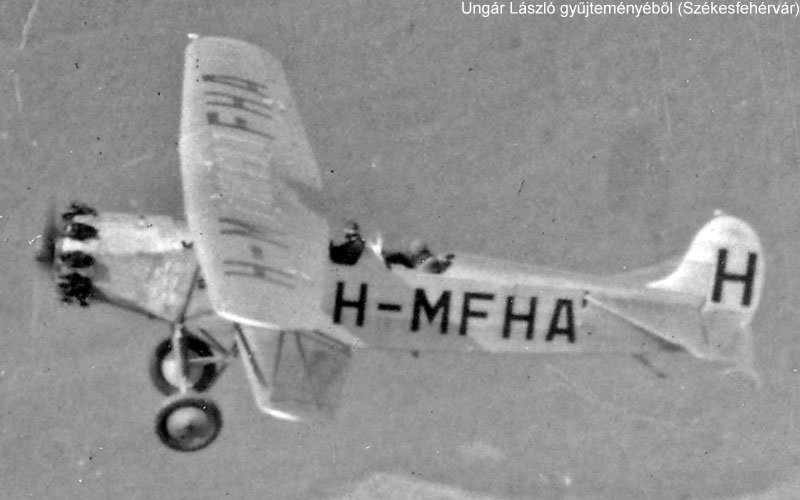
Fokker C.VD
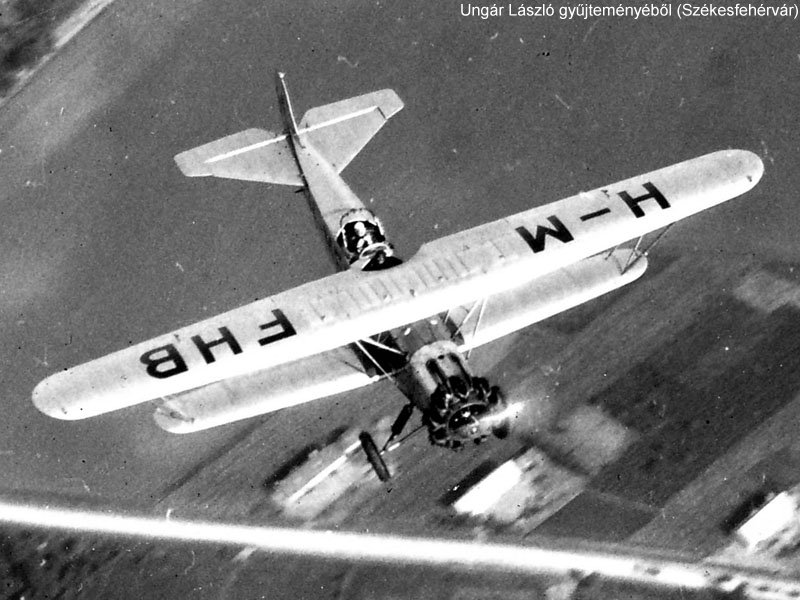
Fokker C.VD
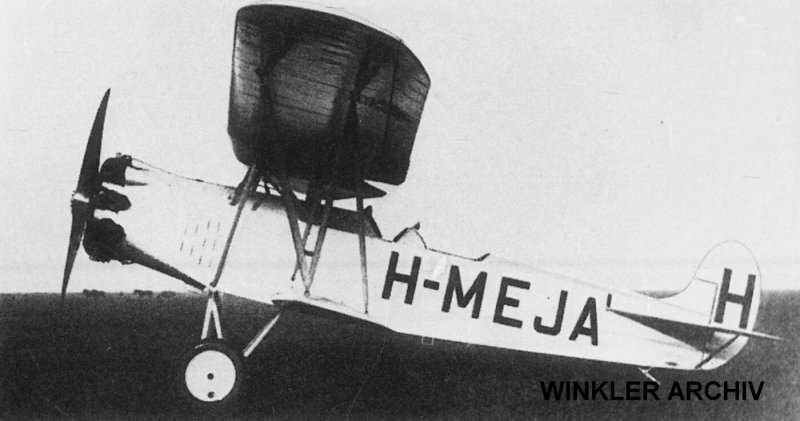
Fokker C.VE
As in Austria was the case the aircraft were registered on MALÉRTs name, but never used by the airline company. Another aircraft studied and used by MALÉRT was the six passenger Caproni Ca.97, of which MALÉRT used 4 aircraft, all delivered by 1930.

Caproni Ca.97
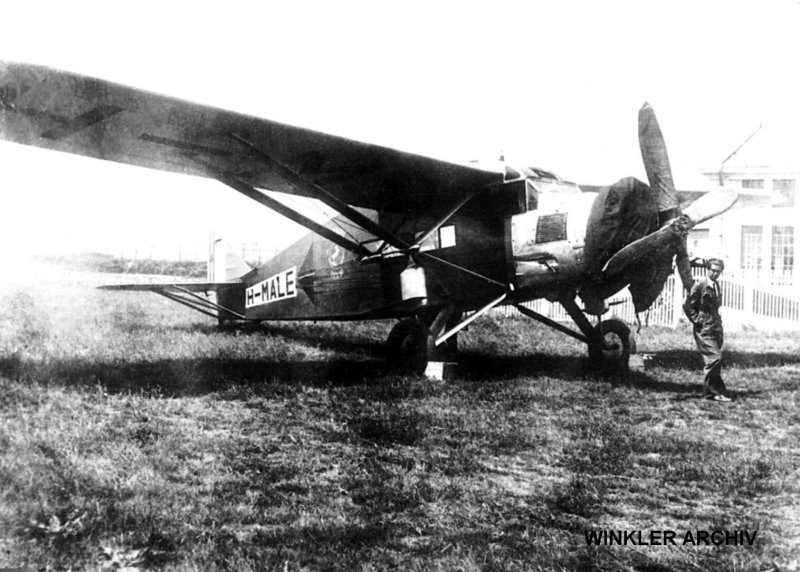
Caproni Ca.97
The aircraft were powered by a 500 hp Piaggio Jupiter VIII engine. These were supplemented by two three engine Caproni Ca.101, also delivered that year. It seems that the aircraft were not suited for MALÉRTs services and by 1931 they were all withdrawn from service.
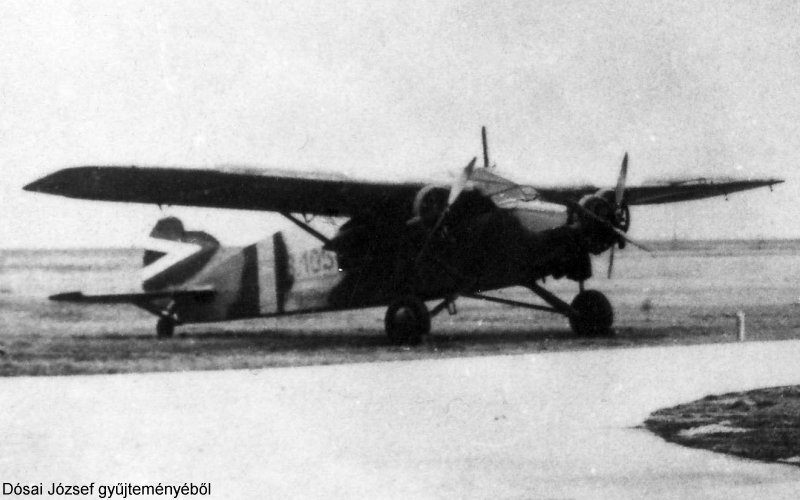
Caproni Ca.101
The organisation of the Hungarian airline company MALÉRT proved to be too small and in 1928 a reorganisation took place, resulting in reconstruction of the company. On 1 August 1928 the company had its stock capital increased to 250,000 Pengö and this resulted in the purchase of the above mentioned aircraft.
In addition to this MALÉRT ordered two Fokker-aircraft of the famous type F.VIIa (delivered July 1928), soon to be followed by its successor the Fokker F.VIII (H-MFNA, delivered October 1928).
One of the most important aircraft in the history of world aviation is the Fokker F.VII. Many pioneering flights were undertaken with the Fokker F.VII as a single-engined or a three-engined aircraft, or with its Americanised version, the C-2. The difference with many other pioneering flights was that the Fokkers were essentially normal airliners, while many others of these flights were performed with specially developed aircraft with no other practical use.
The performances of the F.VII as a pioneer attracted much attention of the airlines. In the late 1920s and the early 1930s the Fokker F.VII was the workhorse of many airlines all over the world. Apart from the records and firsts the F.VII was a good looking aircraft. Although I have never seen a F.VII in flight, there is reason enough for this aircraft type to become one of my favourites.
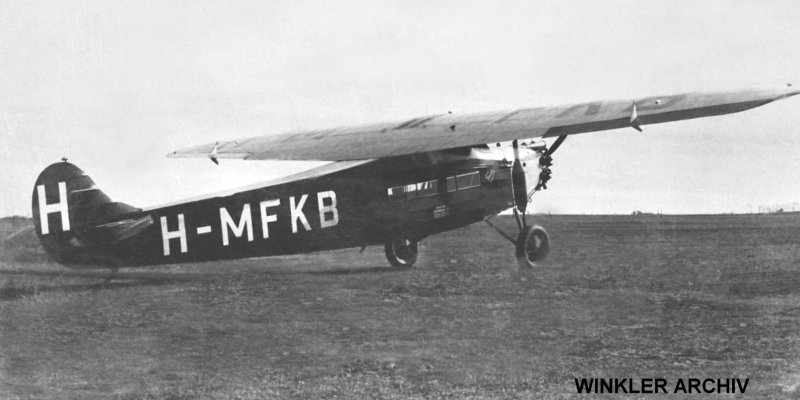
Fokker F.VIIa

Fokker F.VIII
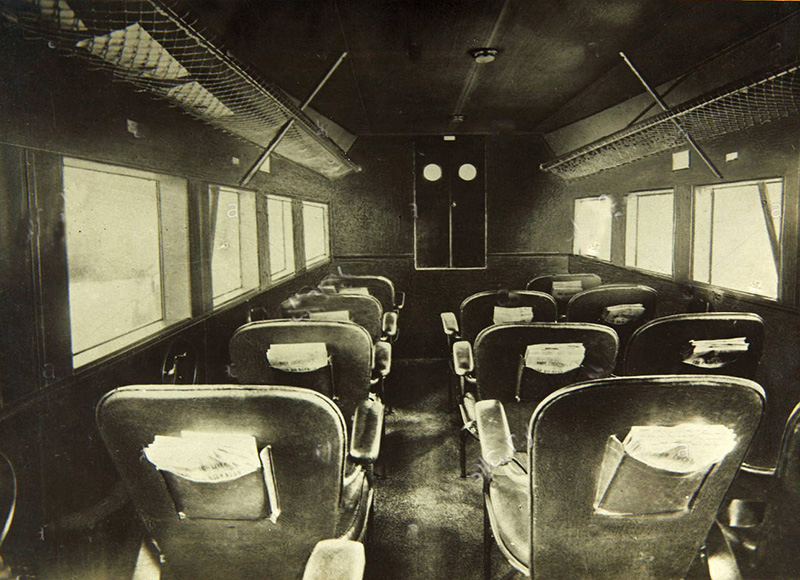
Cabin, Fokker F.VIII
Weiss Manfred Repülögép és Motorgyár Részvény Társasag got the license rights and built for MALÉRT two additional Fokker F.VIII, delivered in July 1929 and October 1930 respectively. It seems that MALÉRT had great trust in the Fokker-products, as another type, the Fokker F.XI, was purchased in 1929 for its network. The Fokker F.XI was not a best-seller for Fokker, but suited perfect for MALÉRTs network.
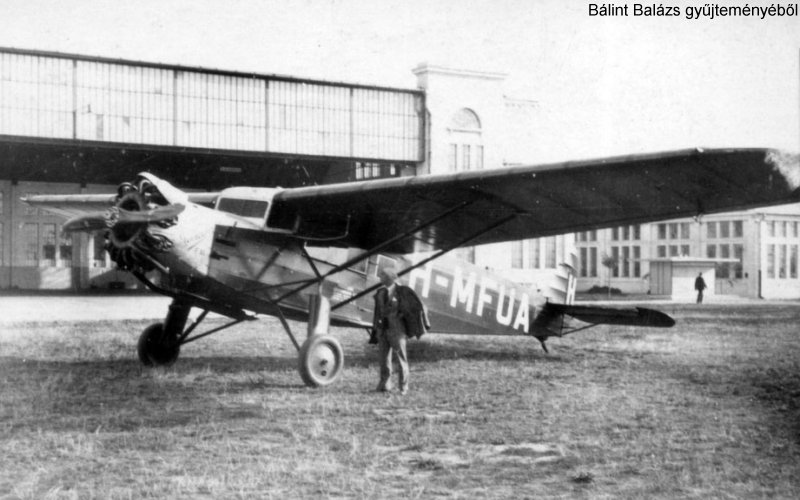
Fokker F.XI Universal
The aircraft could be compared with the Fokker Universal, built by Fokker in the USA, where it had become a very popular aircraft. The Fokker F.XI was the European version of the Universal. Beside MALÉRTs two aircraft, the Swiss airline company Alpar-Bern purchased one example of the Fokker F.XI. The MALÉRT-aircraft had one 500 hp Gnome-Rhône Jupiter VI-engine and could carry 4-6 passengers over a distance of 800 kilometres. By 1930 the MALÉRT fleet consisted of three Fokker F.IIIs, two Fokker F.VIIas, two Fokker F.VIIIs, two Fokker F.XIs, four Caproni Ca 97s and two Caproni Ca 101s. Three Fokker F.IIIs had already been taken out of service by 1930, with the last three F.IIIs cancelled before 1936. In 1929 the Fokker F.III, H-MAFC, had to make a forced landing and was consequently written off.
With the new aircraft and new company structure MALÉRT could face the thirties. The network consisted by 1930 of the Budapest - Wien and Budapest - Graz and by now time was ripe to open domestic routes. By the end of 1929 the air mail service Budapest - Szombathely was flown using the Heinkel HD.22s.
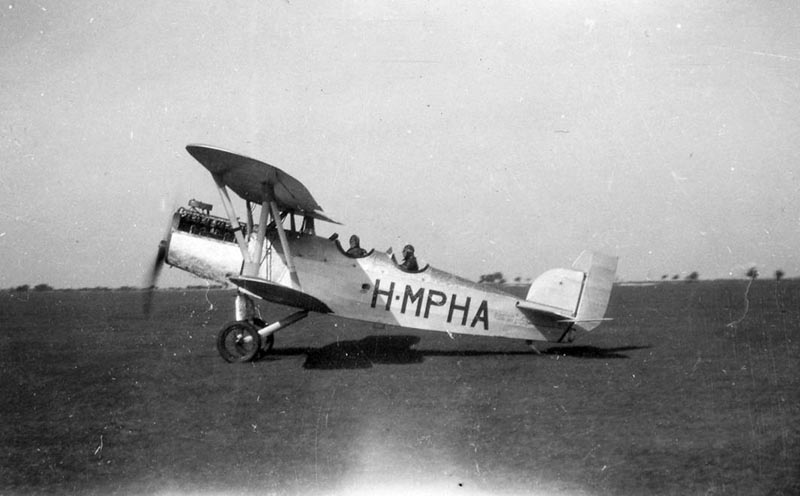
Heinkel HD.22s
In 1930 the first domestic passenger airline could be opened by MALÉRT, following seven years of international flying. The line (Route-No. 422) started in Budapest and landed in Pécs and Kaposvár. The time schedule operated between 11 May and 21 September was as follows:
14.40 hr dep Budapesti arr 08.40 hr 15.50 hr arr Pécs dep 07.30 hr 16.00 hr dep Pécs arr 07.20 hr 16.20 hr arr Kaposvár dep 07.00 hr.
The line to Pécs and Kaposvár was flown by the Fokker F.VIIa, the Fokker F.XI and the Caproni Ca 97. The last aircraft proved to be less successful and was withdrawn from use the same year. The line was flown from 11 May to 21 September on a daily basis, except on Sundays. On 15 June 1931 a second domestic route was opened connecting Budapest with Nyiregyhaza some 320 kilometres away from Budapest. The line was flown by the Fokker F.VII and F.VIII, again daily, except Sundays. On the international lines, MALÉRT could expand as well. The Fokker F.III had become too small for the service to Klagenfurt, and Venezia, and in August 1931 the Fokker F.VIII took over. This service was maintained twice a week in each direction and was closed down for the season on 10 September 1931. MALÉRT carried 72 passengers and 4kg of mail on this service. Not too impressive. In 1927 Hungary and Italy signed an economical co-operation treaty and one of the results was an air treaty, giving MALÉRT permission to fly to Venezia.
The main trunk line Budapest - Wien was served by the Fokker F.VIIa and the F.VIII and flown daily, except Sundays (1 January until 30 September, after which ÖLAG took over the service and flew it until 31 December). MALÉRT carried on this line 1,663 passengers, which made it the main line for MALÉRT. The network had a length of 1,185km, of which 550km consisted of domestic routes. On the regular services MALÉRT carried 3,495 passengers, 48,975kg of mail and 11 tons of goods and paying baggage. The regularity was 96,55% over all routes. From 1931 on the company received 200,000 Pengö in subsidy from the Hungarian Government.
The company took delivery of the ex-Ad Astra Aero AG Junkers F 13 (ex CH 59/66, c/n 574), which had been interned in Hungary since it arrived with on board the former Hungarian King Karl. MALÉRT used it for joy-riding flights in the Lake Balaton area. But this was not the last Junkers-aircraft delivered that year. Beside the Junkers F 13, the first Junkers Ju-52/3m arrived at the Budapest airport. It was the HA-DUR, c/n 5600, to be used as a VIP-aircraft for the Hungarian Head of State, Miklós Horthy. The aircraft was beautifully decorated with the Hungarian arms on its tail. It was flown by crews from MALÉRT.

VIP aircraft
A new cities served by MALÉRTs aircraft was the city of Miskolc. The route was flown from 1 August - 1 September. Another change was the closure of the Budapest - Nyregyhaza line, owing to repairs on the Nyregyhaza airport. MALÉRT flew from 1 May to 12 September the service on Klagenfurt and Venezia, twice a week. To Klagenfurt and Venezia on Wednesday and Saturday and from Venezia and Klagenfurt on Monday and Thursday. The Budapest - Wien service was flown by MALÉRT from 1 May to 31 August. Before and after these dates ÖLAG flew the service.
Results for the year 1932 (with the exception of the Budapest - Wien service) were 871 passengers, 7,574kg mail and newspapers and 9,771kg goods and baggage. On the line to Wien the total result for the four companies flying the service is known: 4,535 passengers, 35,620kg of air mail and newspapers and finally 132,594kg of goods and baggage. On the domestic routes a total of 585 passengers, 7,615kg of mail and newspapers and 4,346kg of goods and baggage was carried. As one can see the best results were made on these domestic routes to Pécs, Kaposvár and Miskolc. This clearly shows the importance of these lines. On the Budapest - Klagenfurt - Venezia route a mere 286 passengers were carried, and just 19kg of mail and newspapers. Although freight and baggage reached the high figure of 5,425kg. Latter was clearly higher than the results achieved on the domestic routes.
The network in 1933 and 1934 did not change compared with 1932. The cities of Wien, Klagenfurt and Venezia were served by MALÉRTs aircraft, while internal routes saw no changes either. The annual subsidy from the Hungarian government was increased to 300,000 Pengö by this year. MALÉRT flew the service on Wien from 15 April until the end of the year and flew to Venezia between 1 July and 15 September 1934. By 1934 the network of the Hungarian airline company had a total length of 1,440km.
The internal routes were closed down by the end of 1934 and not reopened when the 1935-season started. Instead MALÉRT started to concentrate on the international routes and started a co-operation with ÖLAG, Deutsche Lufthansa AG and P.L.L. "LOT". In 1935 MALÉRT started to fly from Budapest via Wien to Salzburg, München and Zürich in pool with the ÖLAG and DLH. The service was flown 6 times weekly in both direction from 1 April until 31 December 1935. MALÉRT stopped flying to Venezia and terminated now in Klagenfurt. The frequency on this line was increased from 2 to 3 times weekly in each direction. New was also the service to London, which started on 2 April 1935 in pool with the Imperial Airways Ltd. from Great Britain.
Results for 1935 were fallen to 1,706 passengers, 26,506kg freight and baggage and 9,065kg of air mail. The total number of kilometer flown was 144,920. These figures increased in 1936 to 162,878km flown, 3,451 passengers, 61,268kg goods and baggage and 11,933kg air mail carried. In 1936 MALÉRT also started with the reconstruction of the fleet and ordered in Germany two Junkers Ju-52/3m, which were both delivered that year. Beside these aircraft one Heinkel He.70 was ordered for services with MALÉRT (probably for new domestic mail services), but it has not been delivered to MALÉRT (no domestic routes were opened either). In 1937 however an additional Junkers Ju-52/3m was ordered and delivered. In 1936 the pool agreement with ÖLAG and DLH was prolonged. MALÉRT flew the route to Wien, Salzburg, München and Zürich from 1 July to 31 August, while ÖLAG and DLH flew the rest of the year (20 April-31 October). This line had the Air Service number 421.
The Junkers Ju 52/3m, HA-JUA of MALÉRT at the apron together with a Polish Ju 52/3m. (Via: Tony Jones)

